Review of Canon EF Lens 50mm 1: 1.0 L Ultrasonic specially for Radozhiva prepared Alexey Egorov.
The Canon EF 50mm 1:1.0 L USM is a very rare, unique, extra exclusive, very expensive, unusual, ultra fast, full frame, "standard" prime lens for Canon SLR cameras. There are infinitely many epithets about this "glass".
I think that at first it is best to briefly mention the history of Canon's camera industry and this glass in particular. As we all know very well, Canon in 1987 switched to the new EF mount. One of the key features of this lens mount is its large diameter of 54 mm, while Nikon went the conservative path (but also the right one!), Keeping the old Nikon F mount with a diameter of 44 mm. The increase in the diameter of the mount gave Canon an advantage in developing aperture optics. And it seems to me that Canon immediately decided to show its technological level by releasing unique "glasses" such as 50mm f / 1.0, 85 mm f / 1.2, 200mm f / 1.8. And the most amazing thing: these old EF lenses are autofocus! The fact is that Canon has created the EF system completely electronic, and the focus motors are located in the lenses.
The 50mm 1.0 lens from this review was announced in March 1987 and became available for sale in September 1989. But, apparently, due to the very high manufacturing cost and unprofitability of production, this lens was discontinued in 2000 (according to some sources , in 2002). In 2006, a less aperture and much less expensive, also autofocus, version of the Canon 50mm f / 1.2 L USM was released, which is still produced today. Now Canon 50mm f / 1.0 is hard to find even on the secondary market, mainly on ebay. In addition, this lens is gradually becoming more expensive, and in dollar terms, so that its value, especially as a collectible, only grows every year. To some extent, this “glass” can be compared with wine or cognac: the older the age (time excerpts), the more its value increases. In general, as we all know very well, lenses become obsolete much slower than cameras, because the laws of optics are unchangeable. With each generation of optics, mainly the electronics of the lens are improved, for example, the speed and accuracy of autofocus, and special optical elements are added to reduce various optical distortions.
And again we see that Canon, having launched mirrorless cameras with R mount in 2018, was one of the first to announce unique, exclusive, sharp and very expensive “glasses” 85mm f / 1.2, 50mm f / 1.2 and 28-70mm f / 2.0, obviously designed, among other things, to demonstrate the technical capabilities of the new mount. Of course, these lenses are autofocus. It should be noted that all lenses for EF SLR cameras, including 50mm f / 1.0, work perfectly on the canon R system using the EF-EOS R adapter. Of course, it is not so important which technique to photograph, but already more, which system this equipment belongs to. Of course, other manufacturers, for example, Nikon, have their own advantages (striking examples are the presence of extremely successful and balanced cameras D780 and D850, as well as the "compact" camera Coolpix p1000 with a zoom factor of 125x!). But for me personally, as a lover of ultra-fast optics, the Canon system turned out to be preferable due to the presence of autofocus full-frame optics with f / 1.2 and even f / 1.0. Here, as they say, a matter of personal taste. In addition, as Arkady correctly and lucidly explained in his articles, the Canon system for lovers of "fifty kopecks" and "portraits" is more preferable (see. here и here).
Canon Lens EF 50mm 1: 1.0 L USM is a large (81,5 x 91,5 mm) and heavy (about 1 kg, according to various estimates from 985 to 1018 grams) lens made of metal. A kilogram is a lot for a fixed "fifty kopeck piece"! Even Mitakon 50mm f / 0.95which I used on the Sony a7s camera, and it weighed 720 grams. This lens looks very solid, outweighs the Canon 6D camera and holds excellent weight balance with the Canon 5D mark 3. The bundle of the 5d mark3 camera and this lens weighs about 2 kg, which is already quite a lot. But, as you know, good, high-quality photo equipment cannot be light and miniature. However, I did not feel discomfort during the filming, although the man himself is far from being large (height 173 cm and weight 52 kg) :). Of course, as can be seen from its full name, this lens belongs to the top-end L-series, and, I would say, it stands out even among its L-counterparts! Naturally, the build quality does not give rise to any complaints. The body is black, with a fairly convenient rubberized focusing ring, with an autofocus switch and an AF distance limiter (0,6 m - ∞ and 1 m - ∞). Near the front lens there is a characteristic red border characteristic of L-cams. The minimum focusing distance is 60 cm, and the maximum magnification ratio is 1: 9.1 (0.11x). A distinctive feature of this lens, like the 85mm f / 1.2 (II), 200 f / 1.8 (and possibly some other Canon “glasses”) is the presence of an electronic focusing ring. With this design, manual focusing is possible only with lenses on the camera (of course, the camera must be turned on); otherwise, rotating the focusing ring does not move the lens unit in any way.
About focusing towards MDF, the trunk of the lens is slightly lengthened; thus, when focusing at infinity, the length of this lens is minimal - before turning off the camera or removing the lens from the camera, it is recommended to focus this "glass" at infinity.
Canon 50 / 1.0L uses 72mm color filters, as do 50mm f / 1.2 and 85mm f / 1.2. I must say that having a filter for such an expensive and rare lens is an absolute must. Of course, polarization, neutral, gradient and other types of filters will be a great addition, expanding the creative capabilities of the photographer. In addition, when focusing, the front lens does not rotate, which allows you to use different kinds of light filters with great convenience.
Autofocus Canon 50 / 1.0L is not very fast, which is most likely due to the large mass of moving lenses. Also on the lens barrel there is a window with a focusing distance scale in meters and feet. The focusing ring rotates about 270 degrees, which greatly facilitates manual focusing and, apparently, improves the accuracy of automatic focusing. When extreme values are reached, the focus ring continues to slide without affecting the focusing distance. EGF lens on Canon APS-H cameras is 65 mm, and on Canon APS-C 80 mm.
The optical scheme, as you can see, has 11 elements in 9 groups; there are two polished aspherical elements here. The lens aperture consists of 8 "blades" and can be closed up to f / 16: thus, the aperture range is 8 stops, which is a good indicator.
Pleased with the image quality, and the bokeh is simply excellent! The lens is sharp enough from the open aperture. On cameras canon 6d and 5d mark 3 with their relatively modest resolution, the resolution of the lens, in my opinion, is quite sufficient. Of course, there is a drop in image quality in the corners, rather significant vignetting at the open aperture. Thanks to the very high aperture and high operating ISO of the aforementioned full-frame cameras, high-quality, low-noise images are obtained even at night. I can even assume that in conjunction with the Canon ME20F-SH camera with its maximum iso 4.560.000, it would turn out to be a night vision camera :).
Here are some examples of photos taken with the camera Canon 6D and this lens. In the process of shooting was used safety filter Kenko PRO1D UV (W) 72 mm. Subsequently, I will write a review on the Canon 5D mark 3, which will also work in conjunction with this lens and, thus, in a future publication there will be new examples of photographs taken with this lens, and this is including closed apertures.
Results
Canon Lens EF 50mm 1: 1.0 L USM - a truly masterpiece of lens construction, a one-of-a-kind fifty dollars. It can be seen that Canon has invested all its "soul" in the development of this lens. It gives an excellent bokt, allows you to shoot perfectly in the dark, suitable for portraiture. Main disadvantages: very rare and expensive. This is a lens primarily for connoisseurs of extra-exclusive optics and collectors. For professional photography, it is best to get a Canon 50mm f / 1.2 L - it is almost twice as light, much cheaper, you can buy it in a photo store, and in the secondary market it is much easier to find than a 50mm 1.0. For ordinary users of Canon SLR cameras, 50mm f / 1.4 or just 50mm f / 1.8.
You will find more reviews from readers of Radozhiva here.

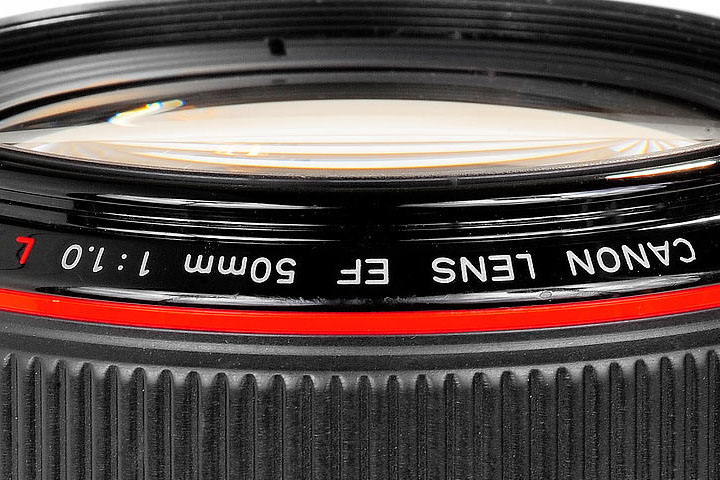
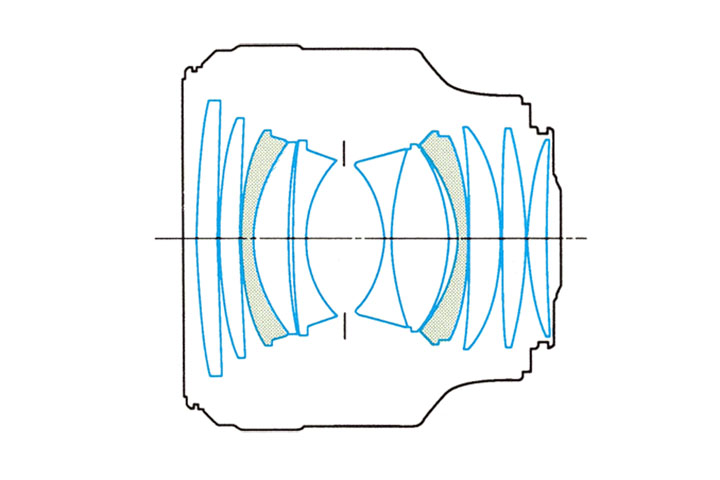
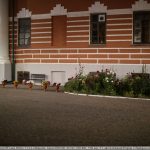
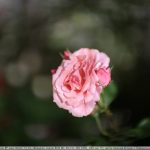
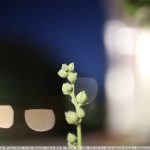

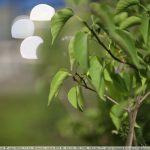
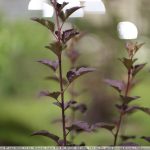
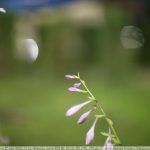

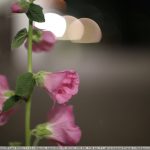
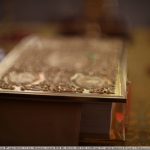
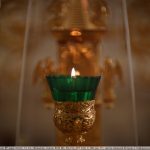
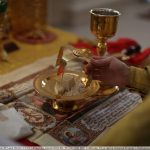

1. How much is?
i saw prices 4000euros….
here is the cheapest ad ...
"For regular Canon DSLR users, 50mm f / 1.4 or 50mm f / 1.8 will be sufficient."
Let “regular users” decide which optics to use!
What is the trigger?
Well, as if rubbing a story, cho trigger. This glass is really only for enthusiasts and those who have gone. Because at an extremely high cost, it does not produce the same high quality. It is much more profitable and reasonable for a professional to take EF 50 1.2L, or 50 1.4 from Sigma.
"Regular users" of course can decide for themselves which optics to use, this is just a hint that they run the risk of overpaying very much for nothing).
Exclusive.
I'm slowly looking at 50 / 1.2L, and people are testing 50 / 1.0L for Radozhiva))
Very rare. I saw a new one without flaws on Avito for 250.000 Russian rubles 2 months ago.
With a broken motor costs 150.000.
The review says that the AF ring is electronic. How then does manual AF work with a broken motor?
Honestly I do not know. As you can see, the seller writes about the manual mode.
Doesn't work at all. If the motor fails in focus by wire, then the manual focus is also all. Look for the same one with a whole motor and a dead lens unit - you never know who has any situation.
and if the computer fails in the fly by wire, then the pepelats quickly meets the ground in a non-landing configuration))
For fans of extreme aperture, there are also 50 / 0,95 (!) For 170.000 rubles on sale
canon 7s?
The ad contains a rangefinder lens. The one shown in the review is mirrored. Rangefinder 50 0.95 shaft, but find at least one specular with F / 1.0 or F / 0.95. So far, I only know two SLRs with a similar aperture ratio.
top bouque)
This will not work on a DSLR, but on mirrorless cameras there is a manual Kamlan 50 1.1 15 times cheaper. To play around with "extreme aperture" is enough, but for more professional use, both are equally unsuitable).
There is also Mitakon 35 0.95, slightly more expensive, in the region of 40K rubles, but still much cheaper than that.
the drawing is clearly not a strong side of this lens.
here you have scales, even in the center of the frame, and the effect of onion rings.
no wonder Canon has discontinued it, the 50L is a cut above it.
And I did not see sharpness at all. Apparently this lens is meant to be shown on the camera without using it. :)
Here is a very curious graph, we look closely :)
It is sad.
What if you compare 50 / 1.8, 50 / 1.4 and 50 / 1.2?
Higher-order aberrations - they are so ...
As a collector's item and an engineering achievement - interesting.
As prof. the solution at the moment I would prefer the RF 50 / 1.2L. And even better - 1.4 with a stub, then there would be no need to fence the city with 1.0. Why wear a kilogram of glass with dubious bokeh that needs to be tightened?
Therefore, the best solution is still 50 / 1.8 - cheap and compact. They will attach a semi-macro to it now - generally good. A portrait photographer needs 85-135 mm, for this there are more suitable glasses.
This lens was a demonstration of the system's capabilities in 1987, much like the Nikkor z 58 / 0.95 is now. For 30 years, technologies, including optical ones, have made great strides forward. For example, the accuracy of calculations, the accuracy of grinding lenses, etc. Hence, imperfect sharpness, and onion rings, and slow AF. Therefore, today this lens is still more collectible value than a working tool.
What opportunities does a huge, heavy lens without autofocus show in 2020?)
By the way, what is interesting, if we compare the optical scheme, then this 50 / 1.0L is more similar to the 85 / 1.2L, especially the front, and both of them have a focus by wire, the same weight and dimensions.
Photos with f1 can not be called other than carbon monoxide.
Yes, technology does not stand still. I liked the bokeh of the recently announced lens: https://photar.ru/gotovitsya-anons-voigtlander-nokton-60mm-f-0-95-mft/
https://dphotoworld.net/news/zy_optics_objavila_50mm_f0_95_39_speedmaster_39_dlja_canon_ef/2020-07-19-8845
Mitakon Speedmaster EF. 50 / 0,95. And only $ 800.
I just made his announcement. At least 30 years later, the king was at least slightly moved to second place in several nominations.
Well read. 📸
The picture and bokeh on open 1.0 is just awful. My Kamlan 50 \ 1.1 MK II will just bury it on the spot according to those. quality)) Yes, and Zenitar 0.95 E judging by the examples is much better. This old man can only be put in the collection in the window of the avid non-poor kenonist
In order to scatter such statements so loudly, you need to take paired shots and compare. And then draw conclusions. Moreover, you are methodically trying to compare mirrorless and mirror lenses. Mirrorless ultra-fast fifty dollars now makes any moron. Mirror after Canon, the Chinese somehow built it, thirty years later.
You can shoot shitty with any lens. The dumbest thing that the owners of high-aperture optics do is begin to shoot flowers on it at night, trying to cope with the millimeter depth of field. And so that there are more light sources. This is not a macro or bokeh lens. This is a lens for film and for low light conditions, to shoot traditional scenes on it. Yes, it is very specific, yes, it is outdated, but for some reason I very much doubt that you will have enough skill to shoot with your Camlan what any thinking photographer will shoot with this Canon.
This Kamlan also does not cover the full frame ... There is nothing to compare here. In the best case - with zenitar-s 50 / 1.2s you can still.
Dear unsurpassed photo-geeks from God, I invite everyone to use it, but I just expressed my veiled hatred of the EF system in a soft plastic form, and you are all serious))))
That is, there will be no reviews, there will be an opinion based on ... nothing?
Mirror Kenon is generally beautiful, starting from ones and the presence of 85 1.2 \ 135 2.0 and ending with the presence of ML :)
Write a review for your kamlan that you praise under every high-aperture newsletter.
Examples of course sad .. but thanks for the review, very cool glass
I double.
Few examples, nothing is clear at all, except for the vignette
The bokeh is beautiful, but Shooting point lights in contrast to it is easy. Onions, cut circles, aberrations. Don't see that. But yes, autofocus, hole 1.0, legend yes ...
Outdated truth, but a legend.
Interestingly, the bayonet size is huge, and the mirror box cuts off part of the image. If you attach it to a mirrorless camera, in theory, there will be a circle ... Except that there may be a stub from the contact pad, it's not on the mount, but hangs over the lens.
Here is Zenitar-S 50 / 1.2s, which I like to remember, hauled for the fact that the shaft of DSLRs cuts circles. But this expensive artifact has everything exactly the same, but to an even greater extent.
By the way, the Canon EF-NEX adapter, for example, also has a shaft, like on a DSLR - that's why circles are also cut with it on similar optics.
I strongly suspect that at the time of designing, no one was flickering on the bokeh, and the aperture was really needed as aperture.
By the way, this is a separate fruitful topic - old lenses on mirrorless cameras, especially these new ones, which are with a stub.
Tele-Tessar 250 / 6.3 will find a rethink)))
http://forum.mflenses.com/userpix/201412/big_8066_teletessar_250_1.jpg
http://forum.mflenses.com/userpix/20153/8066_IMG_7104_1.jpg
Cool. I have such a characteristic bokeh on my old XNUMX-ruble tessera, in the style of “flies in front of my eyes”, but here it is at maximum speed.
Come on, it's a legend!
This lens has a very thin and curved field of focus (by the way, the same as the Zenitar 50 / 0.95). Therefore, its use on SLR cameras is very problematic. If you focus on the center and then re-frame, then the focus will definitely “go away”. Therefore, the optimal field of application of this lens on modern digital UZK, for example, on the Canon EOS R. This camera has phase sensors located throughout the frame, so you can assign the focus area anywhere without re-framing. To do this, just poke your finger on the screen into the model's head. The form of depth of field at open at portrait distances according to the results of my research is as follows: https://www.flickr.com/photos/113819844@N04/51191731275/in/dateposted-public/
Canon 50 / 1.2L is less problematic to use, since its depth of field is almost flat (see diagram above). It is smaller, lighter, much cheaper and, most importantly, much sharper on open air (although there is also a variation in quality, I know, since 3 pieces of 50 / 1.2L have been in my hands). For commercial shooting, 50 / 1.2L is definitely the best option, and for those on a tight budget, 50 / 1.4 will do. There is no point in praising or scolding 50 / 1.0L. This lens is suitable for portraits on the open no further than the bust-waist, this is where it shows amazing volume, especially in the b & w version. It is also possible to shoot a full-length one, but on open 1.0, as they say, there will be no “no eyes or faces”, so it is better to tighten the diaphragm. The bokeh of the 50 / 1.0L is very “courageous”, it differs from the 50 / 1.2L version, so those who like everything smooth-creamy-buttery 50 / 1.0L will definitely not be suitable. In general, there is a user leteom (Mikhail) on flickr, who uses this lens a lot, respectively, a full-size wagon and a small cart on the author's page. You can download and twist ...
Thanks, informative.
Thanks for the comments!
It is interesting to read, until I decided for myself with a Wishlist or 50 / 1.2L or a new Sigma 50 / 1.4 (I know that they are very different)
I will also add a few impressions about the Canon 50 / 1.0L: the fact that it is noticeably less sharp on the open than 50 / 1.2L has already been written. Although if you shoot on FF somewhere a bust-shoulder portrait or closer, then with an accurate focus, you can even pick up cilia, eyebrows, individual hairs on the forehead. picking up the iris of the eyes is not about him. I moved further to the level of a half-length portrait, that's it, the resolution is no longer enough. On the portrait 2/3 and even more so, on the open one, instead of eyebrows-cilia, there will be porridge, so just curl up. The lens has a serious vignette on the open one, which goes away with a tightening of the aperture. Fortunately, the vignette is well corrected without residue and without whitening in the corners, if you set, for example, the vignette editing slider to +100 in ACR. Under certain lighting conditions, the lens gives out strong chromaticity, and at the same time lilac and green, which is almost impossible to fix, or well, sooooo difficult. In the color example below at the first link, the lilac chromatic on the hair is visible in all its glory. As a variant of “struggle” with chromaticity - translation of the image into BW. There are certain questions about the correctness of the skin tone rendering, the impression is that the lens cuts off the orange part of the spectrum, which is precisely responsible for the skin tone. Moreover, it seemed even more difficult to get the correct skin tone from the RAV than from the camera jpeg (EOS R, profile FD). To count on the fact that a camera jeep clicked on this lens, went and printed it or posted it on the Internet is not about him, every frame needs to be “tweaked”. There is a feeling that the most “delicious” images from the lens are obtained in black and white. Could it be because of his film pedigree? Here is an example of a color and BW image, posted on flickr just today, a photo of my daughter:
https://www.flickr.com/photos/113819844@N04/51193904700/in/dateposted-public/
https://www.flickr.com/photos/113819844@N04/51193610914/in/dateposted-public/
I answered you there. I myself also “started” it.
Moreover, a copy of the earliest issue, July 1989. Earlier lenses are unknown.
When bargaining, neither I nor the seller noticed the "catch".
A snapshot of the lens butt with a serial number and OTK stamp at the bottom, here I am attaching a snapshot of my f / a with a lens. I am using Nikon Z6 with Fringer adapter.
Interesting story with years of release, circulation and price of Canon 50 / 1.0L. It is generally accepted that the lens was produced from 1989 to 2000. But if you get fired up with a purchase and start studying serials, you will be surprised to find that all lenses on the market have serials from 1989-1991. Serials after 1991 do not seem to exist. Once I met information that someone came across a 1992 lens, but I have not seen such copies. Apparently they were spanked in 1989-1991 (1992?), And then sold as "straight from the tin" until 2000. How many have been released? Unfortunately, there is no official information. But I met at one of the foreign forums the figure of 5000 pieces. So be it, since there is no other information. If over the past 30 years about 30% dropped out (broke, dropped, drowned, etc.), then no more than 3000-3500 pieces should remain on the market. And even less in perfect condition. When the lens came out, the price was 359000 yen (about $ 3300). Very serious money at the time. In 2013, when Ken Rockwell wrote a review on the subject, he indicated the current price of the bu to about $ 4000. This price was relevant two or three years ago, but about a year ago prices went down to $ 3500-3600, and this year to $ 3000-3100. I don't know if this is a temporary phenomenon associated with an epidemic, or a trend, but Ken Rockwell from the distant 2013 predicted a price for 2020 of $ 5500, for 2025 - $ 7000, for 2030 - $ 10000. Wrong a little, it happens ... :-). In any case, the price of the lens for the entire time it was on the market did not go much lower than its initial price of 359000 yen.
Oooh ... I see the prices are still hooked. Apparently the coronavirus hit the people well. The lens with serial number 13649 UF0603 in excellent condition is exhibited at a well-known foreign site for $ 2799,99. Time to buy!
Recently I went a little crazy and took out this lens.
Brought home, checked the serial number and release date for fun.
It was then that I completely lost my mind.
The unhappy seller (and I) had no idea what we were bargaining about.
This is the earliest known lens in this series at all.
The serial number itself is the second earliest known.
But the OTK stamp dated July 1989.
Naturally began to play. At first with flowers and quickly realized that using this lens for flowers was silly to use. One application is definitely good: plastic inside medieval cathedrals and some specific objects.
The lens itself is VERY difficult to use, especially with the aperture wide open.
More precisely, very easy ... but something would come out well, you have to think a lot.
And so I use it on Nikon Z6, with a Fringer adapter. I do not recommend the Viltrox adapter, I have not tried others yet.
Congratulations! You posted an interesting link with serials. Everyone can add their own copy there. I contributed. Link:
http://www.killingforculture.com/random/index.php?m=Canon_50_f1
As you would expect, they are all 1989-1991 years old, I ended up with 1990. Should you be afraid of earlier numbers? In principle, the earlier a car is manufactured, the cheaper it is ... but this does not work with these lenses. Two years of release 1989-1991 is a very short period for it to somehow affect the price. It all depends on the state. Well, since the lens turned out clearly not for DSLRs and not for film, many people simply did not use it all these years. Mine with a "small" serial 10791 was preserved in a state "like new".
There is another interesting feature of the lens: it has an apparent front lens diameter of about 58-59 mm. Those. in units of the geometric aperture F-stop as the ratio of the length of the tube to its diameter is the lens 50 / 0.85 !!! As Ostap Bender said to Ellochka Shchukina: “You were deceived, you were sold a much better fur ... this is a snow leopard”. :-) BUT (!) The lens has a very noticeable vignette, so if you do spot metering in the center, then according to the exposure pairs it turns out to be lighter than Canon 50 / 1.2L. But if we compare it with “frame” metering, then under some conditions it turns out to be darker than 50 / 1.2L. The reason is very simple - the vignette eats up the T-stop. As far as blur in the out-of-focus area is concerned, yes, in all conditions it blurs the background better than the Canon 50 / 1.2L.
If you ask the question “what does the bokeh look like on Canon 50 / 1.0L?” I would say:
1). Rangefinder Canon 50 / 0.95 and 50 / 1.2 LTM;
2). With a stretch Zeiss Opton Sonnar 50 / 1.5T (well, or our Yu-3). Modern Zeiss Sonnar 50 / 1.5 ZM no longer have any frills in the bokeh, everything has been fixed;
3). With an even greater stretch, the Helios 77m-4 50 / 1.8 (or 77K-4), although it has double vision in the bokeh, which the Canon 50 / 1.0L does not.
If there are more options, write interesting.
My friend sells one, says auto focus either works or not. Wanted 3 years ago 100t.r.
“It costs what it costs, but no one buys it. Your hay is completely useless.” ©
It is very rare, hard to find with a working motor, and extremely expensive.
I saw it twice in 3 years and both times something was wrong with the motor.
It is much easier to find a fresh 50 / 1.2L for 55-65 thousand rubles with a live engine.
Although no, I'm lying. I remembered that I saw one with a live engine for 250.000 rubles in the year 2018 or 2019. You have to be a big fan of Canon and a desperate collector to buy it for that kind of money.
Canon ef 50mm f/1.0L It was bright so I had to squeeze it down to f/2.5 1/8000 sec